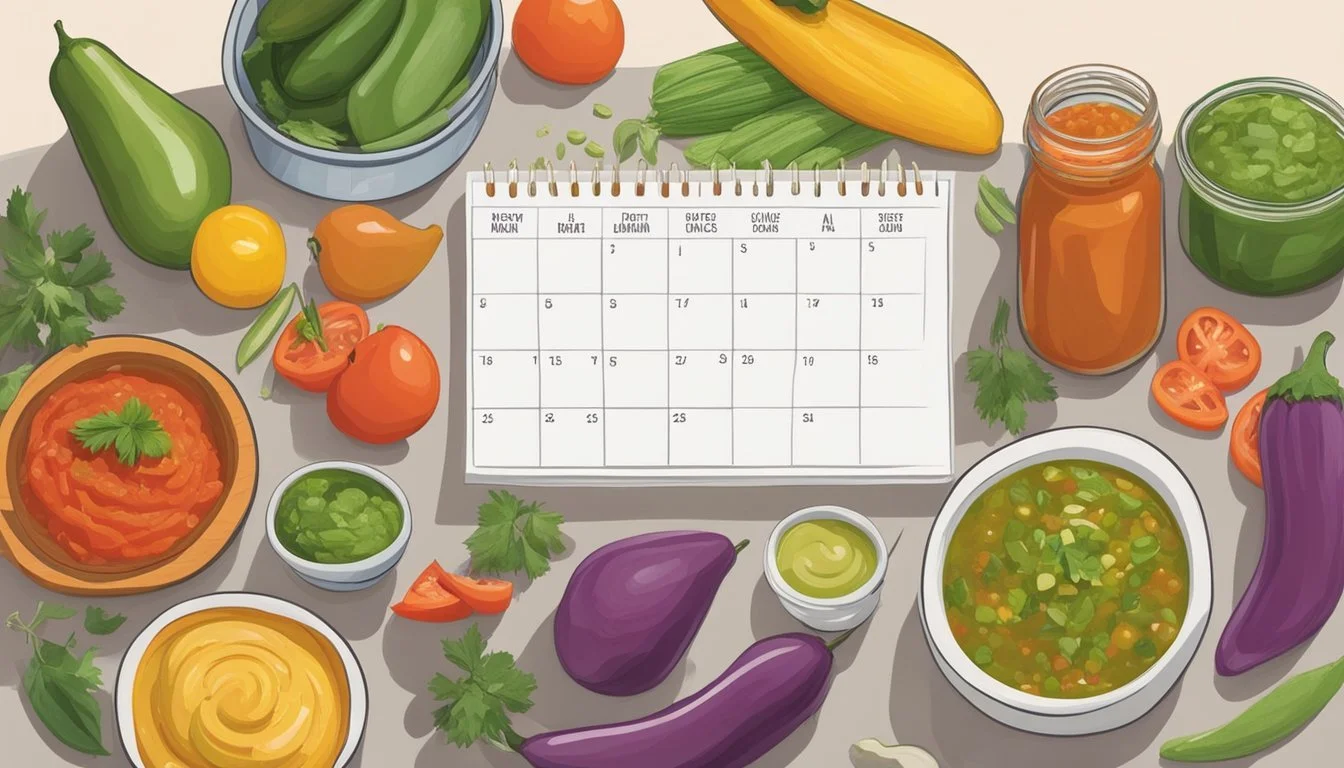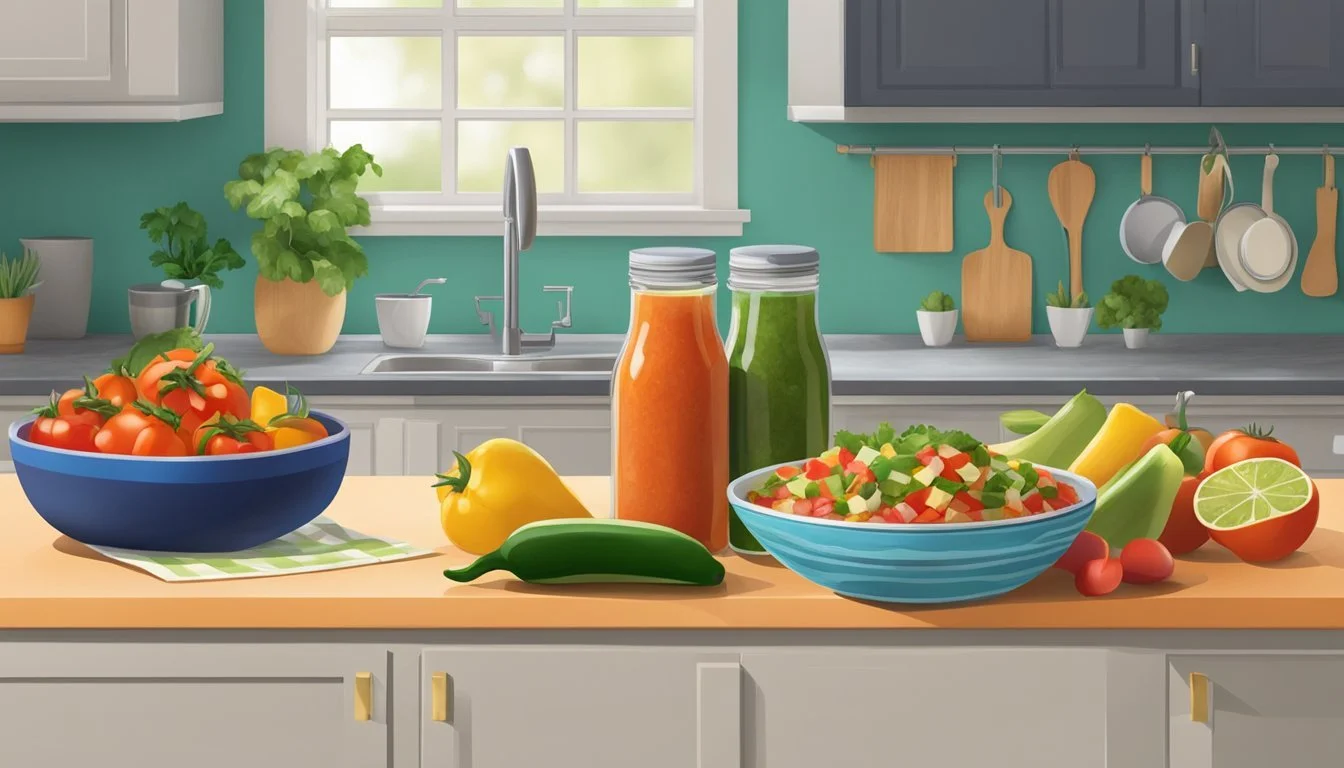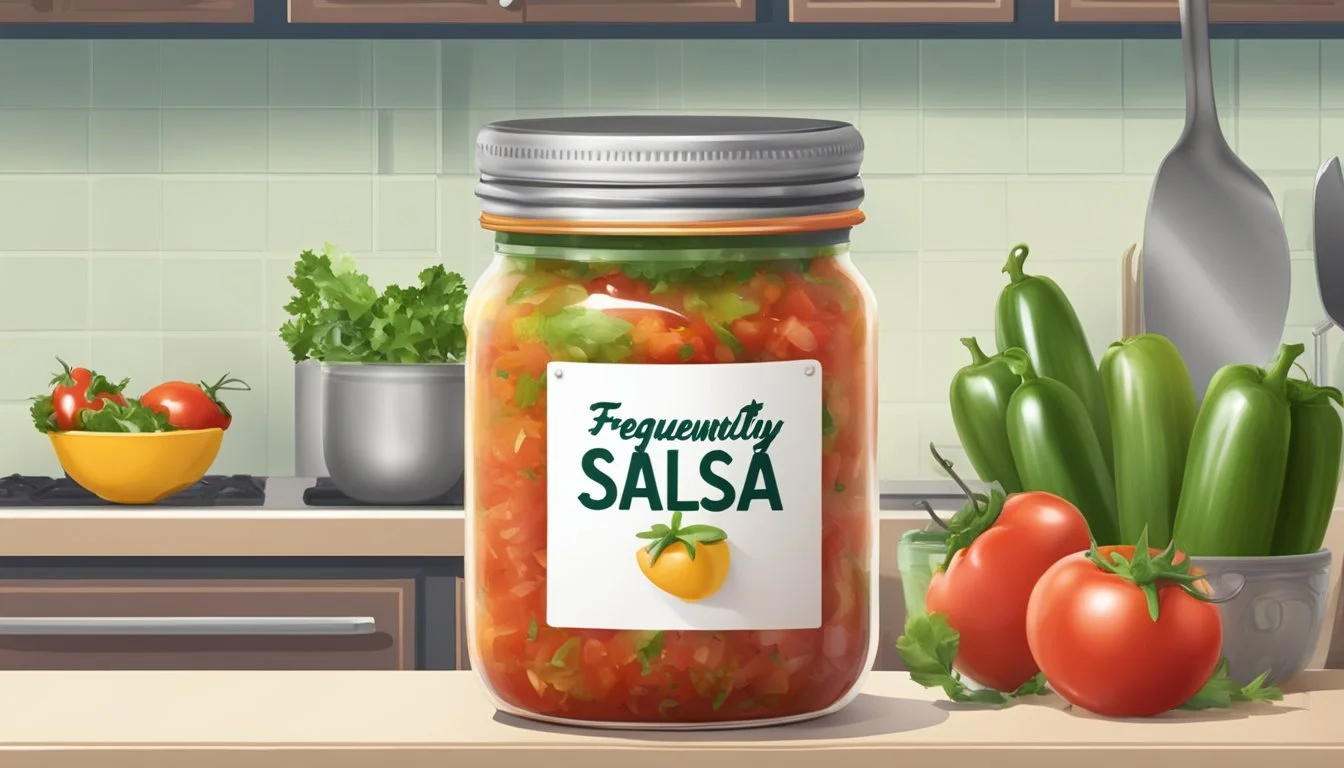How Long Do Fresh Salsas Last?
Understanding Shelf Life and Storage Tips
Fresh salsa, with its vibrant blend of tomatoes, onions, peppers, and herbs, is widely beloved for its zesty flavor. Unlike commercially produced salsas, which may contain preservatives to extend shelf life, fresh salsa's lifespan is considerably shorter due to its lack of additives. The shelf life of fresh salsa varies, and knowing how long it can last is crucial for both safety and taste.
When stored correctly in the refrigerator, fresh salsa typically remains at its best quality for 4 to 7 days. This window ensures the salsa retains its freshness and reduces the risk of bacterial growth. However, once opened or made, it’s important to store salsa in an airtight container to maintain its quality and extend its usability.
For longer preservation, freezing is an option. When sealed in an airtight container or freezer-safe bag, fresh salsa can last for up to 6 months in the freezer. This method of storage may alter the texture of the salsa owing to the water content in the fresh ingredients, yet it remains a practical solution for extending the enjoyment of homemade salsa.
Overview of Fresh Salsa
Fresh salsa is a vibrant and flavorful condiment that varies widely in its composition, but always brings a fresh taste to numerous dishes. It plays a significant role in various cuisines, offering a burst of freshness and spice.
Definition and Types
Fresh salsa, often referred to as salsa fresca or pico de gallo, is typically made from a combination of diced raw ingredients like tomatoes, onions, chili peppers, and herbs. There are multiple types of fresh salsa, including but not limited to:
Classic Tomato Salsa: A simple mix of tomatoes, onions, and cilantro (how long does cilantro last?).
Fruit Salsa: Incorporates fruits like mango or pineapple for a sweet and spicy flavor.
Roasted Salsa: Where one or more ingredients are roasted to enhance depth of flavor.
Significance in Cuisine
Fresh salsa is a staple in Mexican cuisine, often served with tacos, burritos, and grilled meats. Its significance extends beyond Mexican borders, as it's also a popular accompaniment in American and global cuisines, showcasing the versatility of salsa as a healthy and flavorful addition to countless dishes.
Common Ingredients
The ingredients of fresh salsa are selected for their fresh quality and ability to come together into a harmonious flavor profile. Typically included are:
Tomatoes: The base for many salsas, providing a juicy and slightly acidic taste.
Onions: Add sharpness and a crunch to the texture.
Cilantro: Introduces a bright, citrusy note.
Lime Juice: Brings acidity that enhances the freshness of the salsa.
Chili Peppers: Varying from mild to hot, chili peppers infuse the salsa with heat.
Salt: Essential for seasoning and bringing out the flavors of the other ingredients.
Other components might include various herbs and spices to tailor the flavor, as well as ingredients like pepper mash for more complex and hotter versions. Whether for homemade salsa, which allows for customization, or the more standardized store-bought varieties, these ingredients form the colorful and delectable dish known globally as fresh salsa.
Storage Fundamentals
The longevity of fresh salsa is significantly influenced by how it is stored. Adhering to proper storage guidelines is pivotal for preserving freshness and extending shelf life.
Proper Storage Conditions
Fresh salsa should be kept under refrigeration to maintain its freshness. The ideal storage temperature is between 32°F and 40°F (0°C to 4°C), which slows down the growth of harmful bacteria. Preservatives are minimal in homemade salsa, making refrigeration even more crucial to prevent spoilage.
Refrigerator vs. Freezer Storage
The refrigerator offers a shelf life of 4-7 days for fresh salsa. In contrast, the freezer extends a salsa’s usability. When properly sealed, salsa can be stored in the freezer for up to 6 months. However, it's important to note that while freezing can preserve salsa for longer, it may slightly alter the texture upon thawing.
Airtight Containers and Sealing
Storing salsa in an airtight container is essential. Containers with an airtight lid seal out excess air, which can degrade the ingredients and expedite spoilage. Sealing salsa effectively in the refrigerator or freezer also prevents the absorption of odors from other foods.
Salsa Shelf Life
Salsa shelf life varies greatly depending on whether it's a store-bought variety that includes preserving agents, or a homemade fresh salsa that typically lacks these additives. The shelf life is also influenced by how the salsa is stored once the container is opened.
Preserved vs. Fresh Salsa
Preserved, commercially-jarred salsa typically has a longer shelf life due to the presence of preserving agents. An unopened jar of commercial salsa can last for several months before reaching its expiration date, often well beyond if kept in a cool, dry place. In contrast, fresh salsa, which generally does not contain these preservatives, can expect a shorter shelf life of around 4-7 days when refrigerated.
Opened Salsa Containers
Once a container of salsa is opened, the shelf life begins to diminish as exposure to air can introduce bacteria that spoils the salsa. For opened salsa, regardless of being homemade or store-bought, it is typically safe to consume for up to 7-10 days if kept refrigerated and tightly sealed after each use.
Extending Shelf Life
To extend the shelf life of fresh salsa, one might opt to freeze it. Freezing fresh salsa can maintain its quality for up to 6 months. For the best results, it should be stored in an airtight container or a sealable freezer bag to prevent freezer burn. Another method to extend the shelf life of opened salsa is to ensure it is stored in the refrigerator immediately after use and kept tightly sealed.
Recognizing Spoilage
When assessing if fresh salsa has gone bad, one should consider several sensory factors, including appearance, smell, texture, and taste. These indicators help ensure the salsa's quality and safety for consumption.
Visual Inspection
One should inspect the color and look for any signs of spoilage such as mold growth or color change. Fresh salsa typically has a vibrant red or green color depending on the tomatoes and other ingredients used. A dull appearance or discoloration can signal that the salsa is past its prime.
Smell and Odor
Fresh salsa should have a clean, acidic, or spicy smell, depending on its components. An off odor or foul smell suggests the presence of undesirable bacterial growth, indicating the salsa has gone bad.
Texture and Consistency
The consistency of fresh salsa is usually chunky with a noticeable mix of chopped ingredients. If the salsa becomes overly mushy or there's excessive liquid separation, it may no longer be of good quality.
Taste Test
A taste test should only be done if the salsa passes visual and olfactory checks to avoid ingesting spoiled food. Any unexpected sourness or off-putting taste aside from the intended flavors indicates spoilage.
Health and Safety
Proper handling of fresh salsa is crucial to prevent foodborne illness. Consideration of storage, refrigeration, and awareness of spoilage signs are key to ensuring safety.
Preventing Foodborne Illness
To minimize the risk of foodborne illness, one must ensure that fresh salsa is stored at 40°F (4°C) or below, which impedes bacterial growth. Using clean utensils each time the salsa is served helps prevent the introduction of new bacteria. Additionally, limiting the time salsa sits out at room temperature to two hours or less is recommended to maintain safety against potential bacterial contamination, including common pathogens like Salmonella and E. coli.
When to Discard Salsa
Fresh salsa should be discarded after five to seven days of storage in the refrigerator, even if it still appears edible, to reduce the risk of foodborne illnesses. Indicators of spoilage include:
Off-odor: If the salsa emits a sour or unpleasant smell.
Mold growth: The presence of visible mold or any fuzzy growth.
Color change: Any significant change from the salsa's original color.
It is important that consumers use visual checks and smell to assess salsa's quality, notwithstanding the expiration date, to ensure it is safe for consumption.
Freezing and Defrosting
Proper freezing and defrosting techniques ensure that fresh salsa maintains quality and taste over time. The section below outlines specific procedures for these processes.
How to Freeze Salsa
One can freeze salsa to extend its shelf life without significantly compromising its flavor. When freezing, use an airtight container or heavy-duty freezer bag to prevent freezer burn. Leave some space at the top of the container for expansion as the liquid freezes. The key steps for freezing salsa include:
Adjusting seasoning: Before freezing, taste and adjust salts or acids if needed.
Resting: Allow the salsa to sit for about 30 minutes to let flavors meld.
Container choice: Airtight containers or heavy-duty bags are recommended.
Portioning: Consider freezing in portions for easier thawing of smaller servings.
Thawing Procedures
To defrost frozen salsa, one must follow a process that preserves its freshness and prevents contamination. Planning is crucial as salsa should be defrosted in the refrigerator, which can take several hours. Here is the procedure for thawing salsa:
Refrigerator thawing: Place frozen salsa in the refrigerator and allow it to thaw slowly; this can take several hours, depending on the quantity.
Portion thawing: If salsa was frozen in ice cube trays, individual portions can be thawed separately, reducing waste.
Enhancing Fresh Salsa Flavor
To bring out the best in fresh salsa, one must consider the balance of flavors and how to accentuate its natural zest. Acidity, fresh ingredients, and thoughtful pairings are essential for elevating the salsa experience.
Acidic Ingredients
Acidic components like lime juice or vinegar give salsa its distinct zing that can enliven the flavors. They not only add a brightness to the taste but also play a role in keeping the salsa fresher for longer:
Lime juice: Squeezing fresh lime adds a burst of citrus that complements tomato-based salsas.
Vinegar: A splash of vinegar can introduce a tangy element that balances the salsa's overall flavor profile.
Freshness Tips
Maintaining the freshness of the ingredients is key in preserving both the salsa's flavor and longevity:
Use fresh ingredients: Freshly chopped tomatoes, onions, and cilantro can make a significant difference.
Cooking: Briefly cooking certain ingredients, like tomatoes, can enhance their flavor.
Store properly to maintain freshness: Keep salsa in an airtight container in the refrigerator and consume it within 4-7 days.
Pairings and Usage
Salsa can be much more than just a dip for tortilla chips. Here are various ways to incorporate salsa to elevate different dishes:
Tacos: Fresh salsa adds moisture and a flavor kick to both fish and meat tacos.
Hot sauce vs. Picante sauce: Consider the differences in flavor concentration—hot sauce can intensify heat, whereas picante sauce, often chunkier and less spicy, blends well with the salsa's components.
Versatility in usage: Utilize fresh salsa as a condiment, in cooking, or as a healthier alternative to dressings.
Frequently Asked Questions
In this section, readers will find clear and concise answers to common questions regarding the preservation and safety of fresh salsa.
Shelf Life Related Queries
How long does fresh salsa last in the refrigerator?
Fresh salsa typically lasts between 4 to 7 days in the refrigerator. For store-bought varieties, it is advisable to adhere to the expiration date on the packaging.
Can fresh salsa be stored at room temperature?
Fresh salsa should only be kept at room temperature for up to 2 hours. Beyond this, it is at risk of bacterial growth.
Storage Optimization Questions
What is the best way to store fresh salsa to extend its shelf life?
Storing fresh salsa in an airtight container within the fridge is the optimal method. Freezing it can further extend its shelf life to approximately 2 months.
Do preservative ingredients affect the shelf life of fresh salsa?
Yes, preservative ingredients can extend salsa's longevity, but fresh salsa typically contains fewer preservatives than commercial brands, reflecting a shorter shelf life.
Safety Concerns
How can one tell if fresh salsa has gone bad?
Indicators include a sour smell, discoloration, and the presence of mold. If any of these are noticed, the salsa should not be consumed.
Is it safe to consume fresh salsa left out overnight?
No, salsa left out at room temperature for more than 2 hours should be discarded to prevent the risk of foodborne illness.
Concluding Remarks
In evaluating the lifespan of fresh salsa, storage conditions are paramount. Fresh salsa typically remains consumable for 4 to 7 days in the refrigerator, provided that it is stored in a sealed and proper container. Once opened, a similar timeframe of 5 to 7 days can be expected for its longevity.
Storage Condition Expected Freshness Duration Refrigerated (Unopened) 7 to 10 days Refrigerated (Opened) 5 to 7 days Freezer (Properly Sealed) Up to 6 months
It is crucial that consumers are mindful of food safety and observe the product closely for any signs of spoilage, such as off odors, discoloration, or mold growth before consumption. To extend the shelf life of fresh salsa, freezing is a viable option, allowing it to last for approximately six months.
Consumers should also ensure to use clean utensils when serving salsa to avoid cross-contamination, and should maintain consistent refrigeration temperatures to preserve freshness. The tactics and timelines mentioned offer guidance for enjoying salsa at its best quality and preventing food waste.








